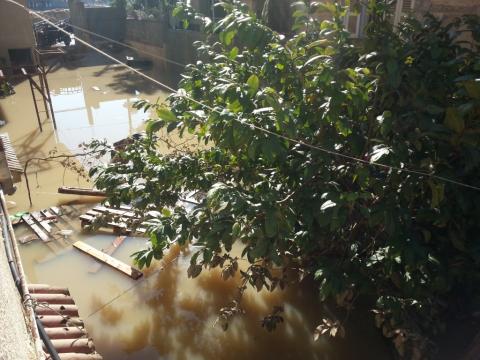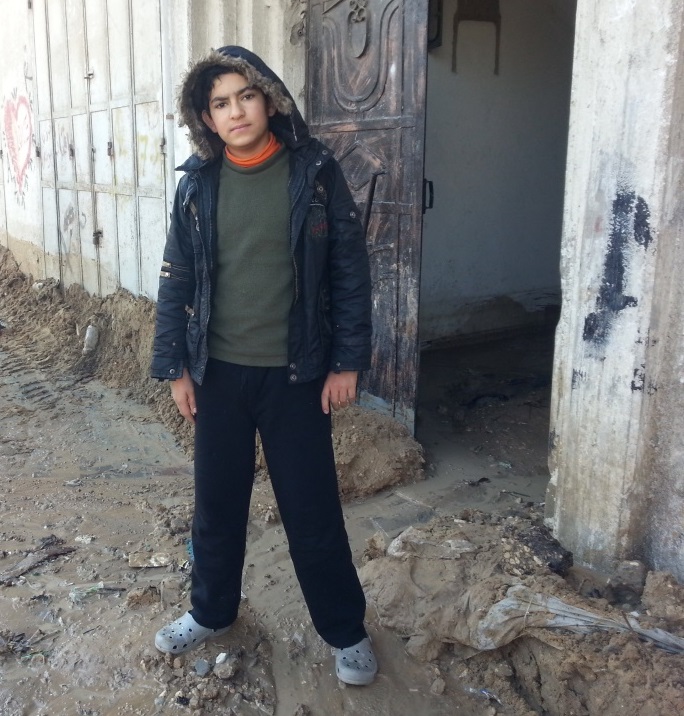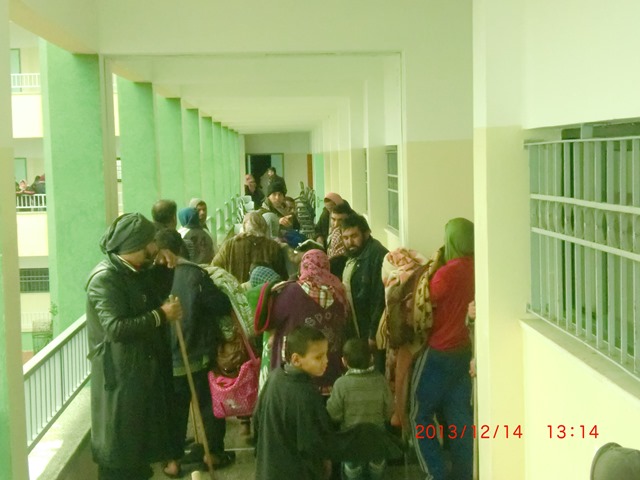Surviving winter weather in North Gaza

The strongest winter storm in decades, hit the occupied Palestinian territory (oPt) on December, 11, bringing with it strong winds, heavy rains, low temperatures and, in some areas, heavy snowfall, making life even more difficult and generating humanitarian needs in many communities.
In the recent months, a fuel and energy crisis in Gaza Strip has made it even harder for residents to survive. With the shutdown of the Gaza Power Plat families already faced power outages that routinely last for 12-16 hours. If that was not bad enough the electricity feeder lines which bring power to the Gaza Strip from Egypt were damaged by the storm.
Heavy flooding as a result of the storm has forced approximately 10,000 people to leave their homes. Data from the Bait Lahia municipality, indicates that 4,500 people of those who were displaced by the floods are from the North Gaza area. One of the most affected areas in North Gaza, according to OCHA’s situation report) was the American Friendship lagoon Area; where the flooded area is estimated to be 1 square kilometre and where the water is half a meter deep[1].
Mohammed, 12, lives in the North Gaza Area Development Programme (ADP). Hi family’s experience during the storm is similar to that of thousdands of other families.
"It started raining nonstop,” he says. “It was very cold and because there was no electricity or even fuel we could not operate any heaters. It was like a freezer!"
“I was sitting with my three brothers and sisters, my mother and grandmother in one room in order to get warm,” he says, recalling the storm. “Then, suddenly my father entered and asked us to move quickly to the second floor. Immediately I carried my little brother while my father was helping my grandmother. When we opened the door, we found water rising and it seemed that the whole floor was drowning, and we moved to the second floor,” added Mohammed.
"I felt angry, afraid, and sad,” he says. “I did not know what to do, I saw my books drowning; my sisters were crying, and my father was doing his best to get any kind of help. It was very hard. The only warm feeling that I had was that I was with my family.”
For Three days, Mohammed, his five brothers and sisters and his parents and grandmother were trapped on their second floor of their without power and with few supplies, waiting for help until the emergency teams were able to evacuate them by small boats.
Like thousands of of others, Mohammed’s family was forced to leave their home and take refuge in a government school.
World Vision Jerusalem West Bank and Gaza is currently planning an emergency response for the most areas affected, especially Gaza, Hebron and West Ramallah villages.
[1] OCHA, Situation report of the winter storm (as of 14 December, 2013).

